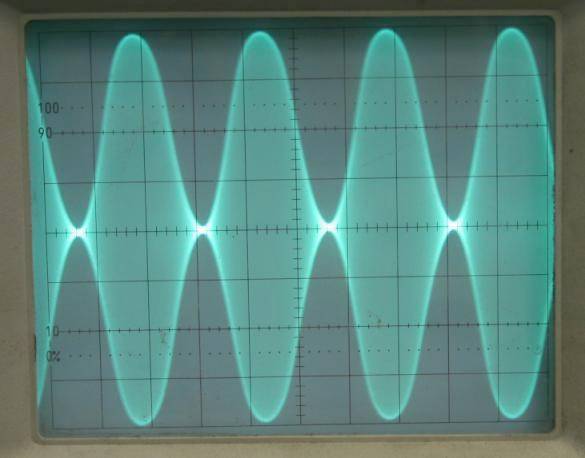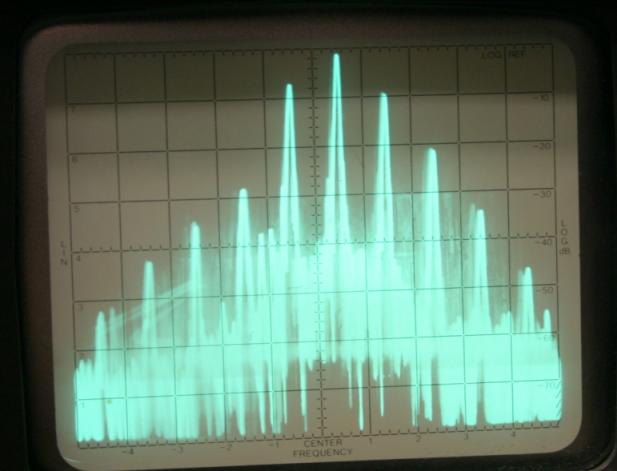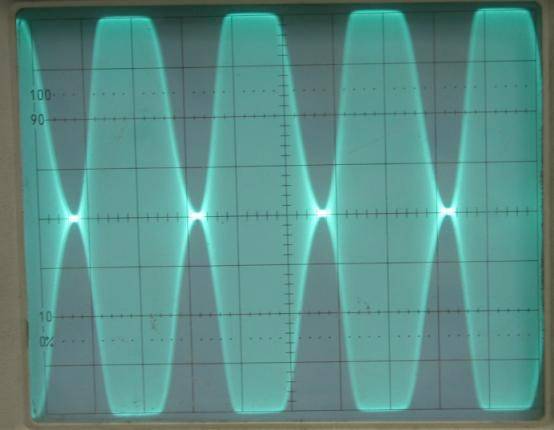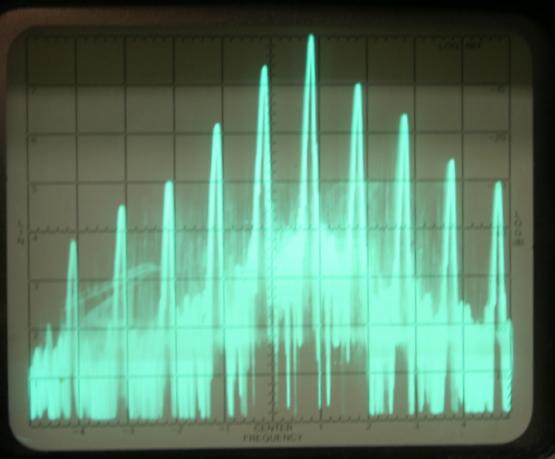I'm posting this to see if we can get some good technical discussion going of this somewhat controversial modification/module. I've done a bit more study recently, and here's what I've found:
The top two photos are from a magnum S9, tuned to exactly the 4:1 ratio, full power, 100% modulation. The first two photos are without the Top Gun, the second 2 are with the Top Gun. The photos will speak for themselves to you fellow techies, so I won't go into detail on what's shown. I will note that NO settings were changes on either the 'scope or analyzer during the test, other than center position on the analyzer (to keep the signal roughly centered on the screen). The photos with Top Gun on show increased audio harmonic distortion, which is showing up as a "clipped" audio signal in the scope photo, and as a much wider sideband (and much higher IMD) in the analyzer photos. No gain in the usable sidebands is seen. I ran the same tests with the radio set for about 2 watts key, and basically the Top Gun just seems to artificially turn the radio up to full power while modulation is present, then let it fall back to the 2-watt key level when modulation is not present. I didn't bother to post those photos because the TG photos at 2-watt key are all but identical to the high-power photos without the TG.
Before Top Gun:


After Top Gun


Now before everyone and his brother starts posting lots of opinions based on just using their radio, let me say that I'm not looking for non-tech postings on this one. I want to hear input from actual techs with experience in testing radios with the TG feature either built-in or added, and hear what their test results were. Also, I understand that most power meter shows more power with the TG than without, but the photos above show that there isn't any more power developed. I want to hear from any techs who actually have seen more power developed on an analyzer and 'scope, as well as those who have basically seen the same thing I have.
The top two photos are from a magnum S9, tuned to exactly the 4:1 ratio, full power, 100% modulation. The first two photos are without the Top Gun, the second 2 are with the Top Gun. The photos will speak for themselves to you fellow techies, so I won't go into detail on what's shown. I will note that NO settings were changes on either the 'scope or analyzer during the test, other than center position on the analyzer (to keep the signal roughly centered on the screen). The photos with Top Gun on show increased audio harmonic distortion, which is showing up as a "clipped" audio signal in the scope photo, and as a much wider sideband (and much higher IMD) in the analyzer photos. No gain in the usable sidebands is seen. I ran the same tests with the radio set for about 2 watts key, and basically the Top Gun just seems to artificially turn the radio up to full power while modulation is present, then let it fall back to the 2-watt key level when modulation is not present. I didn't bother to post those photos because the TG photos at 2-watt key are all but identical to the high-power photos without the TG.
Before Top Gun:


After Top Gun


Now before everyone and his brother starts posting lots of opinions based on just using their radio, let me say that I'm not looking for non-tech postings on this one. I want to hear input from actual techs with experience in testing radios with the TG feature either built-in or added, and hear what their test results were. Also, I understand that most power meter shows more power with the TG than without, but the photos above show that there isn't any more power developed. I want to hear from any techs who actually have seen more power developed on an analyzer and 'scope, as well as those who have basically seen the same thing I have.
